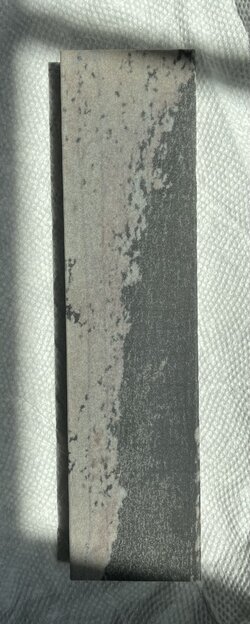I recently got a Dans 8x2 soft (and hard) Arkansas - trying to set a bevel on a barbers pet razor. I dressed the soft stone surface to 150 grit using a sic stone.
The bevel faces are being created and appear to meet. However, there seem to be chips being created at the edge. No matter how long I hone. I just a 50/50 mix of mineral oil and mineral spirits. I also tried wiping and replacing oil when I saw swarf build up. That didn’t help either.
To rule out technique and razor, I set a bevel on the same razor using my Shapton 1500. That works. In other words, the razor can hold the edge at that angle. It appears to be the stone or how I’m using the stone.
What might be the issue?
The bevel faces are being created and appear to meet. However, there seem to be chips being created at the edge. No matter how long I hone. I just a 50/50 mix of mineral oil and mineral spirits. I also tried wiping and replacing oil when I saw swarf build up. That didn’t help either.
To rule out technique and razor, I set a bevel on the same razor using my Shapton 1500. That works. In other words, the razor can hold the edge at that angle. It appears to be the stone or how I’m using the stone.
What might be the issue?
Last edited:

